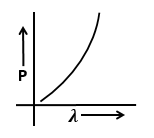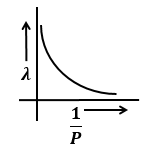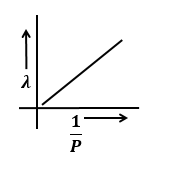Given below are two statements:
Statement I:
Line emission spectra are useful in the study of electronic structure.
Statement II:
Each element has a unique line emission spectrum.
1.
Statement I is incorrect and Statement II is correct.
2.
Both Statement I and Statement II are correct.
3.
Both Statement I and Statement II are incorrect.
4.
Statement I is correct and Statement II is incorrect.
| Statement I: | Emitted radiation will fall in the visible range when an electron jumps from n=4 to n=2 in H-atom. |
| Statement II: | Balmer series radiations belong to the visible range for hydrogen atoms only. |
| 1. | Statement I is incorrect and Statement II is correct. |
| 2. | Both Statement I and Statement II are correct. |
| 3. | Both Statement I and Statement II are incorrect. |
| 4. | Statement I is correct and Statement II is incorrect. |
Statement 1: The ground state electronic configuration of nitrogen is
Statement 2: Electrons are filled in orbitals as per the Aufbau principle, Hund's rule of maximum spin multiplicity, and Pauli's principle.
1. If both the statement are true and statement -2 is the correct explanation of statement-1
2. If both the statements are true but statement-2 is not the correct explanation of statement-1
3. If statement-1 is true and statement-2 is false
4. If statement-1 is false and statement-2 is true
- If both the assertion and the reason are true and the reason is a correct explanation of the assertion
- If both the assertion and reason are true but the reason is not a correct explanation of the assertion
- If the assertion is true but the reason is false
- If both the assertion and reason are false
Given below are two statements:
| Statement I: | Orbital having xz plane as node may be 3dxy. |
| Statement II: | 3dxy has zero radial node. |
| 1. | Both Statements are true, and Statement II is the correct explanation of Statement I |
| 2. | Both Statements are true but Statement II is not the correct explanation of Statement I |
| 3. | Statement I is true and Statement II is false |
| 4. | Statement I is false and Statement II is true |
The quantum number not obtained from Schrodinger’s wave equation is:
| 1. | \(n\) | 2. | \(l\) |
| 3. | \(m\) | 4. | \(s\) |
A dye absorbs a photon of wavelength and re-emits the same energy into two photons of wavelengths and respectively. The wavelength is related to and as:
1.
2.
3.
4.
The excited state of an H atom emits a photon of wavelength and returns to the ground state. The principal quantum number of the excited state is given by:
1.
2.
3.
4.
Identify the graph that correctly depicts the variation of momentum with the de-Broglie wavelength of a particle.
| 1. |  |
2. |  |
| 3. |  |
4. |  |
on two particles A and B are plotted against de-Broglie wavelengths. Where V is the potential on the particles. Which of the following relation is correct about the mass of particles?
1.
2.
3.
4.
The largest de Broglie wavelength among the following (all have equal velocity) is:
1. molecule
2. molecule
3. Electron
4. Proton







